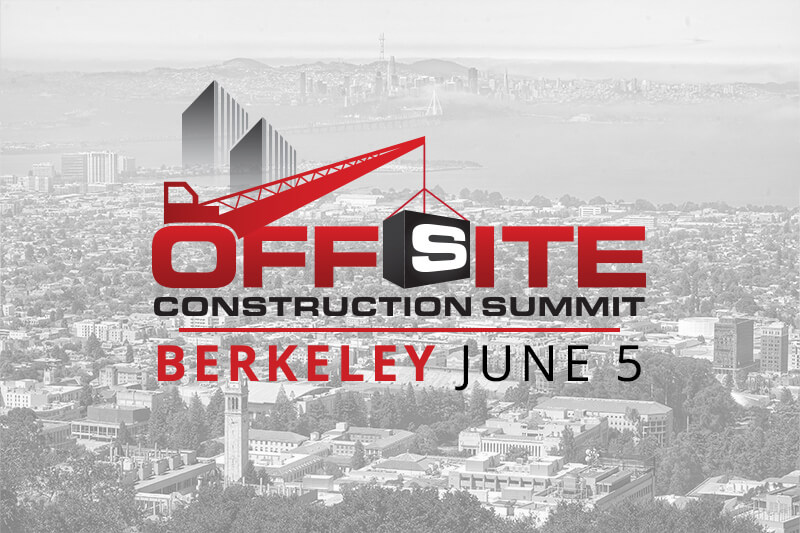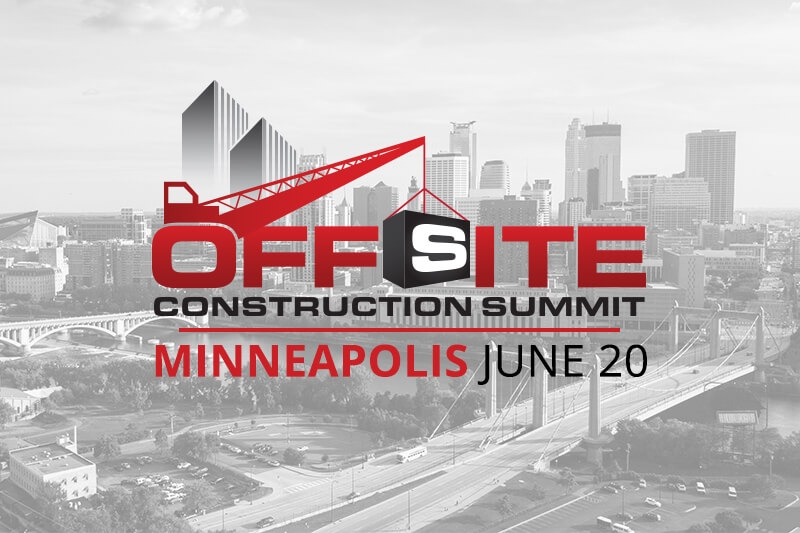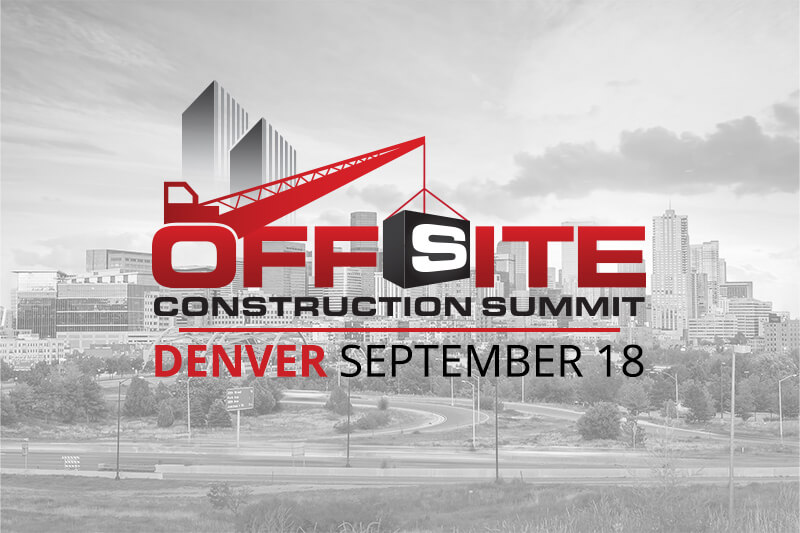Precast & Prestressed Concrete
Concrete is a strong material with a long history. It has uses in forming siding, foundations, driveways, and columns. Its versatility, including possible reflectivity, and its relatively low cost, are the reasons why this construction component became and has remained so popular.
Regardless of its application, concrete has traditionally been poured onsite as needed. Newer methods of concrete component construction have been developed, however, such as precast and prestressed concrete, that allow for the offsite prefabrication of concrete slabs and products. These prefabricated products can be used in commercial, industrial, infrastructure, and residential projects and have nearly limitless possibilities.
What Is Precast Concrete?
Precast concrete is a product cast somewhere other than where constructors will use it. Most are cast in a factory through a wet-cast method, but some sites opt to create them like tilt-up panels. The wet-cast process involves pouring concrete into a mold and then vibrating it.
The concrete stays in the mold until it hardens and someone removes it. To create the concrete, contractors mix water, cement and aggregates like sand. Aggregates usually make up about 60% to 75% of the mix.
Where Is Precast Concrete Used?
Builders often use precast concrete in larger, multi-resident structures such as apartment buildings, hotels, and nursing homes. The material offers excellent fire resistance and sound control for individual units. Also, precast concrete is popular for office buildings due to its durability. Its smooth surface spans long distances making it ideal for storage structures.
Contractors use precast concrete in residential homes as well. Here are a few applications:
- Countertops
- Sinks and bathtubs
- Outdoor furniture
- Rock features
- Architectural elements like window sills and accent strips
Architects also use this versatile material for other non-residential structures, such as:
- Bridge beams
- Fences
- Septic tanks/utility holes
- Pipes
- Foundation walls
- Architectural panels
What Are the Benefits of Precast Concrete?
One of the benefits of precast concrete is it's manufactured in a controlled environment. This makes it easier to work with the mix and find the proper placement. The quality of the product can be controlled, creating more durable material. Since laborers can buy materials for multiple projects, this leads to lower costs.
Another benefit is the weather is not a risk factor and less labor is required. The installation is also quicker once onsite, saving time and increasing overall productivity.
The precast concrete process is also environmentally friendly. Workers can add recycled materials — such as fly ash — to the concrete. Creating precast concrete onsite can reduce noise and air pollution. Additionally, the high-quality finish of precast concrete can be left untouched, maximizing its thermal mass benefits. During the production process, construction workers can control waste and re-use molds.
Things to Consider About Precast Concrete
One of the downsides of this material is the high initial investment. In fact, one cubic yard may cost between $300-$420. Heavy and advanced machinery is necessary for production plants. Another concern is transportation. The offsite construction site may be further away from the manufacturing area, increasing the risk of damaged pieces and fuel overuse.
Precast Concrete and Offsite Construction
Precast concrete is helpful for offsite construction projects, like building prefabricated homes. Workers can produce the material in tight spaces, which is ideal in cities. Since the product isn't shipped to the job site until ready, the area has less clutter.
In addition, the quality is better since the process takes place in a factory with strict guidelines. Technology can also minimize errors common in onsite construction. The job requires fewer workers, which lowers the risk of injury. The precast concrete process is also quicker, speeding up the project schedule.
What Is Prestressed Concrete?
Prestressed concrete is where contractors use initial compression before applying the external load. Workers insert high-strength steel wires into the beam and stretch and anchor them. They then pour concrete into the formwork, allowing it to harden around the steel strands. Constructors then remove the formwork and cut the steel strands. This compressed material is less likely to crack under external forces.
Where Is Prestressed Concrete Used?
Prestressed concrete has many uses due to its increased strength. It has both residential and civil applications. The material works well for long-span or high structures like bridges — its compressed features allow it to withstand heavy traffic.
Due to its high tensile length, builders use prestressed concrete in commercial construction projects. These include things like parking garages and shopping centers. In addition, they can utilize it in auditoriums, gymnasiums and cafeterias because of its acoustic properties and ability to provide open spaces.
Here are a few more applications of prestressed concrete:
- Structural beams
- Floor slabs
- Hollow-core planks
- Balconies
- Water tanks
- Concrete pipes
What Are the Benefits of Prestressed Concrete?
Prestressed concrete is higher strength due to how it was built. Therefore, it’s perfect for dynamically loaded structures such as railways. It’s also more resistant to shear forces like heavy wind. With more durability, prestressed concrete allows for increased efficiency and safety.
The risk of tension cracks is reduced, so there’s a lower chance of steel components eroding. Plus, the concrete can withstand reversal of stresses, impact, vibration and shock.
Another benefit is these structures require less maintenance. The longer spans of concrete result in fewer joints, saving money down the line.
Things to Consider About Prestressed Concrete
A high degree of artistry and control is necessary to create the product. This can entail more pressure to find qualified candidates for the job. Also, these steel materials can be more expensive than traditional building elements. Other costs include special equipment and safety regulations.
Prestressed Concrete and Offsite Construction
One of the benefits of prestressed concrete in offsite construction is removing limitations. It reduces the barriers placed on spans and loads for roofs, floors and bridges with longer sections. That way, contractors can build lighter and shallower structures without sacrificing strength.
Another asset is prestressed concrete requires fewer joints, saving money on the construction budget. It also reduces costs by using thinner slabs and a lower volume of material.
Prestressed concrete also is good for safety — it’s a fire-resistant material, perfect for homes in humid climates. Manufacturing these materials offsite is also beneficial to the environment. It can reduce waste and control factors such as carbon emissions.
Choosing to Use Precast and Prestressed Concrete for Offsite Construction
Concrete is a durable and versatile material used in the construction industry. There are multiple types of this material, differing based on their production.
Precast concrete is made from molds, usually offsite. The prestressed concrete is similar but gest reinforced with steel compression. Both have multiple applications, from commercial spaces to home features like countertops.
Each is helpful in offsite construction because they offer a quicker turnaround and more efficiency. Plus, controlled settings can reduce waste from manufacturing processes. The one thing to keep in mind is the initial cost may be higher and it requires more extensive equipment.
Don't Miss Our Upcoming Events!
Join the leading companies and professionals from across the offsite construction industry at each of this year's Offsite Construction Network events. With summits and expos taking place across North America in 2024, it's never been easier to connect with and learn from offsite construction manufacturers, designers, builders, and suppliers from the United States and Canada.
Subscribe today to get the latest updates on these and future events from the Offsite Construction Network.




